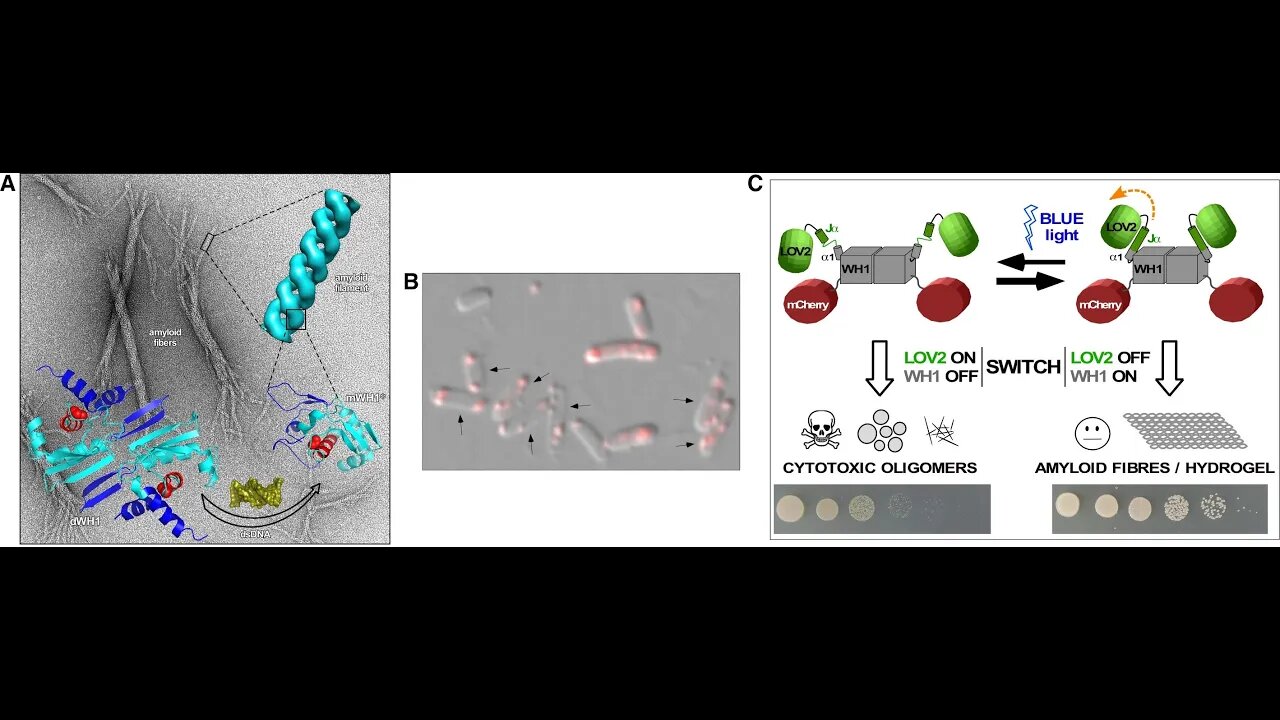Premium Only Content

RepA-WH1 Prionoid
RepA-WH1, the agent of an amyloid proteinopathy in bacteria, builds oligomeric pores through lipid vesicles
https://www.ncbi.nlm.nih.gov/pmc/articles/PMC4794723/
What is EGCG? Green Tea
Epigallocatechin-3-gallate (EGCG): chemical and biomedical perspectives
https://pubmed.ncbi.nlm.nih.gov/16876833/
RepA-WH1 in the news 30 June 2020
SynBio and the Boundaries between Functional and Pathogenic RepA-WH1 Bacterial Amyloids
To fulfill the current expectations on the use of amyloid nanomaterials in SynBio applications, achieving control of amyloid nucleation and growth and of any potential cytotoxic side effects is an essential goal. As addressed here, ligand-promoted amyloidogenesis can provide such fine-tuned levels of regulation and thus should be explored further. Conversely, engineering amyloid cytotoxicity in bacteria, coupled to horizontal gene transfer, might enable new ways to selectively eliminate either bacterial pathogens or specific bacteria from an engineered microbial consortia to program changes in strain composition in biotechnological processes, as proposed for light-modulated cell ablation by “optobiotics” (63). It might be interesting to test synthetic bacterial prion-like proteins, as generated by engineered microbiota, in the current animal models of human amyloidoses to assess their possible effect on disease onset and progression. Small bacterium-related mobile genetic elements encoding just a protein carrying a domain like RepA-WH1 have been isolated from bovine meat and dairies, and also from primary human tumors while the patients developed antibodies against the protein (80). So probably, there is still plenty of room to be explored for bacterial amyloids in human diseases.
https://journals.asm.org/doi/full/10.1128/mSystems.00553-20
SYNTHETIC BACTERIAL AMYLOIDS
https://www.cnb.csic.es/index.php/en/investigacion/departamentos-de-investigacion/biotecnologia-microbiana/amiloides-bacterianos-sinteticos
-

Epstein Borreliosis AIDS
2 years agoOPERATION WARPED SPEEDILY ROLLING OUT THE GREAT RESET OF HUMANITY AND THE BIOSPHERE
3732 -
 19:01
19:01
Russell Brand
9 hours agoTheo Von Just SHOCKED EVERYBODY With His Take on Trump Tariffs
65.9K92 -
 14:22
14:22
Tundra Tactical
4 hours ago $2.52 earnedTRUMP DOJ Decides CZ Scorpion Is A Decepticon.
26.8K14 -
 LIVE
LIVE
Culturama Podcast
2 hours ago $0.02 earnedEaster Special! Hollow Knight Stream!
151 watching -
 1:04:29
1:04:29
Sarah Westall
5 hours agoThe Philippines and Massive Stores of Gold for all the People of the World w/ Joseph Allain
40.4K27 -
 17:23
17:23
Exploring With Nug
14 hours ago $0.92 earnedCorvette Found Underwater! Continuing The Search For Laresha Walker!
39.4K2 -
 LIVE
LIVE
Damysus Gaming
2 hours agoWeaving into the Deep South: South of Midnight First Play! Part 2
15 watching -
 24:55
24:55
MYLUNCHBREAK CHANNEL PAGE
10 hours agoDams Destroyed China
64K41 -
 LIVE
LIVE
BigTallRedneck
3 hours agoFORTNITE - THE QUEST FOR THE OPAL PICKLE
45 watching -
 LIVE
LIVE
Razeo
6 hours agoEpisode 3: 1st playthrough - Mandragora. What happens when The Pancake King goes eats Waffles?
24 watching